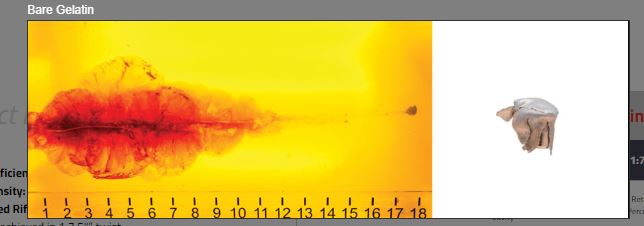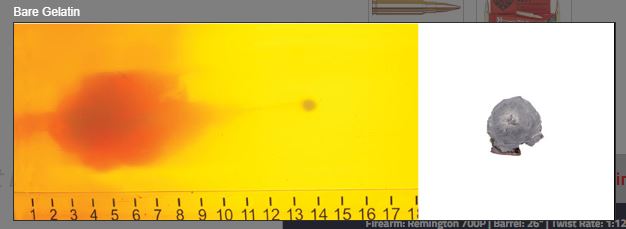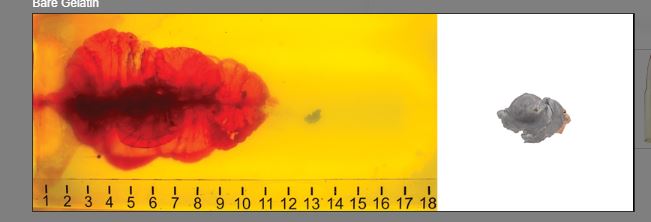Thanks for the info, I think in reality I'll need to try and stalk into 300yds where I am very confident in a killing shot.
Cheers!
Welcome guest, is this your first visit? Create Account now to join.
Welcome to the NZ Hunting and Shooting Forums.
Search Forums
User Tag List
+ Reply to Thread
Results 1,981 to 1,995 of 2504
Thread: 223 on deer
-
09-08-2024, 12:07 PM #1981Member

- Join Date
- May 2023
- Location
- Auckland
- Posts
- 146
-
-
09-08-2024, 12:37 PM #1982Member

- Join Date
- Jun 2024
- Location
- Waikouaiti
- Posts
- 113
I dont shoot at anything over 300 metres away.
-
09-08-2024, 12:38 PM #1983Member

- Join Date
- Dec 2014
- Location
- Napier
- Posts
- 510
It will kill a deer even if it doesn't expand. Just because a projectile expands doesn't mean a thing and certainly shouldn't be used to base the terminal performance of a bullet off.
A good cast subsonic load will still expand at 150 yards if it hit a bit if bone, maybe even if it didn't hit bone. Can assure you it will kill the animal if you hit it in the vitals, might just have to track it for a couple of hundred metres. Same effect as using a .223 at a longer range.
Expansion is only a part of the equation.
I've seen plenty of slightly miss placed .223 shots in my line of work and most of the time the deer is gone never to be seen again. Slightly misplaced shots with something like a .308 with eldms or similar soft projectiles often results in a very short track.
Don't get me wrong, I love my .223 but they are simply not the caliber you would take out to try and shoot deer over 500 yards.
-
09-08-2024, 01:23 PM #198475/15/10 black powder matters
-
09-08-2024, 01:24 PM #1985
Your comment re soft eldms and a slight miss hit equals expansion.so again make up your mind.
75/15/10 black powder matters
-
09-08-2024, 01:30 PM #1986Member

- Join Date
- Jun 2024
- Location
- Waikouaiti
- Posts
- 113
We are going to have to get Tahr to make a ruling.
Is the .223 just as good as a .308 at 475 metres.
-
09-08-2024, 01:53 PM #1987
But it's not that simple is it... .308 goes from 110-220grn from pure varmits explody to fmj or solids. The 223 goes40-80 grn varmits through to solid. If you can place your shot into a vital bit..for sure it will kill. How cleanly and quickly is different story..but we all know that.
75/15/10 black powder matters
-
09-08-2024, 02:14 PM #1988
To understand experienced or likely terminal results, we can take predictive (speculative) approaches, or empirical observational approaches using data from actual performance.
On the latter, the HornadyLE website is pretty cool - it has gelatin test images for all their LE line of ammunition. It is convenient, as I find their bullets work very well.
Ballistic gelatin tests are a standardised way to compare the performance of various bullets at various speeds in a consistent medium, that is designed to as closely as possible represent the "average" consistency of flesh & bone in a body.
The results are quite interesting and may be informative. It is unfortunate that no hunting ammunition results are published in a similar vein. If anyone has objective empirical data they have gathered from performance in actual animals to show, that would also be of great interest.
.223 75gr "TAP". this is a 75gr poly tipped bullet - basically a 75gr ELDM with a round tip to allow it to fit in AR15 magazines. Fired from a 10.5 inch barreled AR15 at 2200fps. Note the tremendously slow MV and the relative performance.

6mm ARC 106gr "TAP". This is a 106gr version of the ELDM. No, I don't know why. Although it is a slightly different bullet, it is more reasonable to expect that it performs very similarly to a 108gr ELDM, than it is to expect it to perform differently. Fired from an 18 inch barreled AR15 at 2625FPS.

.308 155gr ELDM. Fired from a 26 inch barrel at 2789fps.

Note the penetration and the relative size of the wound cavities. Regardless of the amount of theoretical potential energy the bullet has to transfer; this is the actual result of how it transfers that energy. These are not as different as predictive approaches would have you suggest.
Now there are some .308 loads that do produce a much larger wound cavity - 168gr ELDM at somewhere north of 2700 fps. However note that both this load and the 155gr .308 load penetrate less than the .223 and 6mm. That's most likely a function of the higher impact velocities causing more deformation.

Some food for thought.
-
09-08-2024, 03:59 PM #1989Member

- Join Date
- Dec 2014
- Location
- Napier
- Posts
- 510
Everything will kill won't it. My point if you read both the post I commented on and mine was just because a projectile expands well it doesn't mean it kills well. A soft cast going subsonic still expands at quite a range and even placed into the vitals kills slowly. Just because a .223 projectile expands at close to 500 yards doesn't mean it's going to kill well.
A soft eldm out of a .308 is simply going to give you more margin for error at 500 yards than an eldm out of a .223.
Long story short, the first post that Gimp replied to was querying about shooting deer at 530 yards with a .223. Gimp stated "A way to assess effective terminal range is to consider whether your bullet will expand."
I was pointing out that just because a bullet still expands doesn't mean it kills well. Quite simple really.
-
09-08-2024, 04:46 PM #1990Member

- Join Date
- Dec 2014
- Location
- Napier
- Posts
- 510
I'm sure Gimp says above that he has shot deer out to 420m, which is about 460 yards, with them. Tahr stated he is most comfy out to 300 with maximum shots out to 375 yards.
Big difference between those two ranges than the 530 yards than MP270 was genuinely querying about.
And both Tahr and Gimp are not your average everyday hunters, their limitations will be a lot higher than most.
-
09-08-2024, 05:14 PM #1991
So we agree.use enough gun.bigger and more expandy is better but if and only if you can consistently poke pill in right place and follow up if you get a runner....you can use less than ideal round. Personally I don't often use the .224s out long on deer. The wee fallow at 225 yards the other day was pushing it for me...that said it died quicker due to better shot placement than the one at hundy yards a few days later.
75/15/10 black powder matters
-
09-08-2024, 07:18 PM #1992Member

- Join Date
- Aug 2019
- Location
- Manawatu
- Posts
- 1,054
Gimp is onto it.
Considering the .223 v .308 debate here, I would pick the .223 every time. It will drift less, and therefore will show less ‘variance’ from expected POI if the wind call is wrong. And that will be the deciding factor. A 80gr ELD-M launched at 2800fps will kill out to near on 600yds if it hits the spot. However, the reality is that the probability of the bullet striking its target (where you want it to) is very low. We’re talking something as low as 30-60%. Brian Litz developed a model that can predict this -it’s called the WEZ (weapon engagement zone)
Oh yeah, the .223 will give you a better chance of hitting due to less recoil too.
450yds is my limit with my .223 in perfect conditions.
-
09-08-2024, 07:24 PM #1993Member

- Join Date
- Jun 2024
- Location
- Waikouaiti
- Posts
- 113
You are comparing a heavy long .223 bullet with a very high BC. What about with a comparative .308 bullet?
-
09-08-2024, 07:28 PM #1994
I personally was comparing the 2 bullets I was shooting side by side recently in .223 and .308.
-
09-08-2024, 07:30 PM #1995
Similar Threads
-
Deer 1 & 2
By Scott29er in forum The MagazineReplies: 12Last Post: 19-02-2020, 07:33 PM -
First deer film of 2018, 300 NM & 3 deer
By Norway in forum The MagazineReplies: 10Last Post: 11-01-2018, 01:21 PM -
little bit of deer
By sneeze in forum Photography and VideoReplies: 11Last Post: 13-12-2012, 06:03 AM
Tags for this Thread
Welcome to NZ Hunting and Shooting Forums! We see you're new here, or arn't logged in. Create an account, and Login for full access including our FREE BUY and SELL section Register NOW!!





 7848Likes
7848Likes LinkBack URL
LinkBack URL About LinkBacks
About LinkBacks



 Reply With Quote
Reply With Quote



Bookmarks